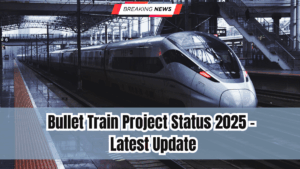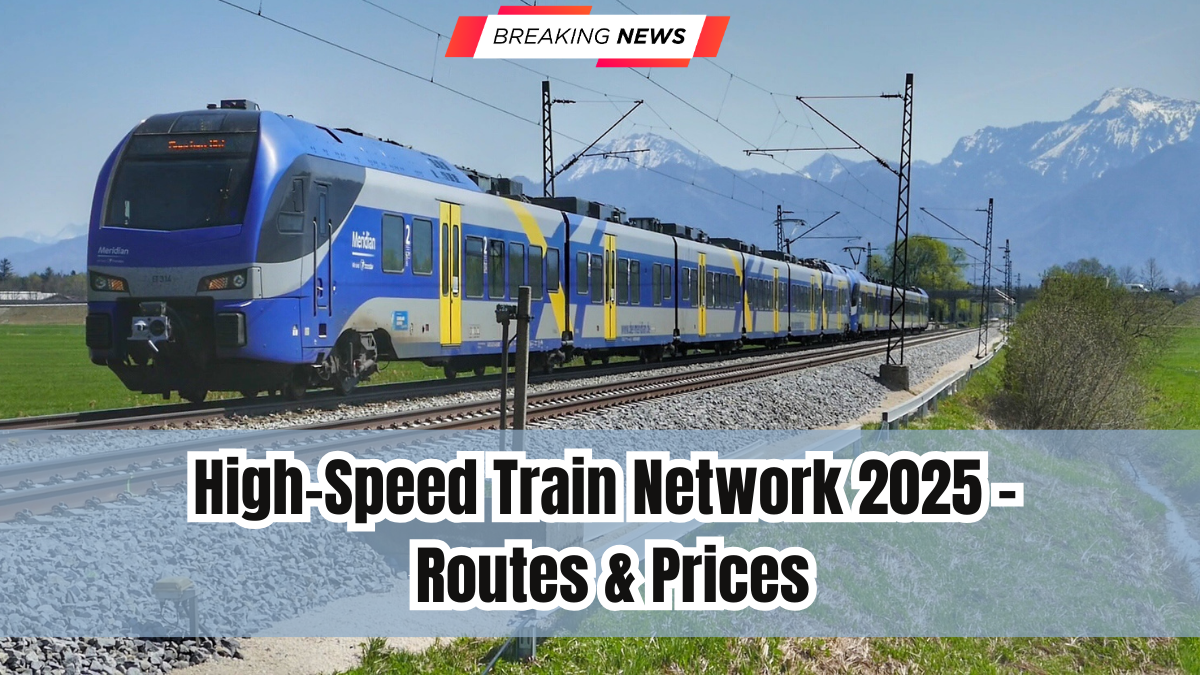India’s ambitious dream of running its first bullet train is finally turning into reality. The Mumbai-Ahmedabad high-speed rail corridor has been one of the most awaited infrastructure projects in the country. The Bullet Train Project Status 2025 highlights significant progress in construction, speed trials, and a clearer picture of the launch timeline.
This project, executed by the National High-Speed Rail Corporation Limited (NHSRCL), is a technological leap for Indian Railways, introducing Japan’s Shinkansen-based technology to Indian tracks. For millions of daily travelers and business commuters, the bullet train promises unmatched speed, safety, and convenience.

Current Progress of the Project
The Bullet Train Project Status 2025 shows that construction has picked up pace across multiple sections:
-
Viaducts and Bridges: Major segments of elevated tracks are near completion.
-
Stations: Work is ongoing at key stations including Mumbai, Ahmedabad, Vadodara, and Surat.
-
Tunnels: The undersea tunnel near Mumbai is one of the most challenging engineering feats and is progressing with advanced boring machines.
-
Land Acquisition: Over 95% of the required land has been acquired in Maharashtra and Gujarat.
These developments suggest that India’s first bullet train is on track for partial operations soon.
Speed Trials and Technology
One of the most exciting aspects of the Bullet Train Project Status 2025 is the speed trial phase. Trial runs are being prepared with imported Shinkansen trainsets from Japan.
-
Design Speed: 350 km/h
-
Operational Speed: 320 km/h
-
Expected Travel Time: Just 2 to 2.5 hours between Mumbai and Ahmedabad, compared to the current 6–7 hours by conventional trains.
Advanced signaling systems, automatic train control, and earthquake-resistant features make this project one of the safest railway systems in India.
Expected Launch Date
According to the Bullet Train Project Status 2025, the first operational stretch may be launched by 2026, with the Surat-Bilimora section being prioritized. Full operations between Mumbai and Ahmedabad are expected soon after, depending on construction progress.
The government aims to conduct full-speed trials by the end of 2025, setting the stage for official inauguration in the following year.
Benefits of the Bullet Train Project
The Mumbai-Ahmedabad corridor is not just about speed—it brings multiple benefits:
-
Economic Growth: Faster connectivity between financial hubs will boost trade.
-
Employment: Thousands of jobs created during construction and operations.
-
Tourism: Easier travel between Mumbai, Surat, and Ahmedabad.
-
Environment: Electric-powered trains reduce dependence on fossil fuels.
-
Technology Transfer: Indian engineers trained in Japan’s high-speed rail systems.
The Bullet Train Project Status 2025 reflects how India is integrating global technology to transform its transport future.
Challenges Faced
Despite progress, challenges remain:
-
High Costs: The project’s budget exceeds ₹1 lakh crore, raising financing concerns.
-
Delays: Land acquisition disputes initially slowed the project.
-
Technical Complexity: Undersea tunnels and seismic zones require advanced solutions.
-
Public Concerns: Questions about ticket pricing and affordability remain.
Addressing these issues is key to ensuring smooth rollout and public acceptance.
Future of High-Speed Rail in India
The success of the Bullet Train Project Status 2025 will pave the way for more high-speed rail corridors. Plans are already in motion for:
-
Delhi-Varanasi Corridor
-
Mumbai-Nagpur Corridor
-
Chennai-Bengaluru-Mysuru Corridor
These expansions aim to make high-speed rail a backbone of India’s transport system by 2040.
Conclusion
The Bullet Train Project Status 2025 reflects a landmark moment in India’s infrastructure journey. With construction advancing, speed trials underway, and a launch date on the horizon, the Mumbai-Ahmedabad bullet train is set to redefine travel in India. Beyond cutting travel time, it symbolizes India’s progress toward advanced technology, sustainable transport, and global competitiveness.
FAQs
What is the operational speed of the bullet train?
The operational speed will be 320 km/h, with a design speed of 350 km/h.
When will the bullet train start in India?
Partial operations may begin in 2026, with speed trials expected by late 2025.
How long will it take to travel from Mumbai to Ahmedabad?
The journey will take about 2 to 2.5 hours compared to the current 6–7 hours.
What technology is used in the bullet train project?
It is based on Japan’s Shinkansen system, known for speed and safety.
What is the biggest challenge for the project?
High costs, land acquisition delays, and technical complexities like undersea tunneling.
